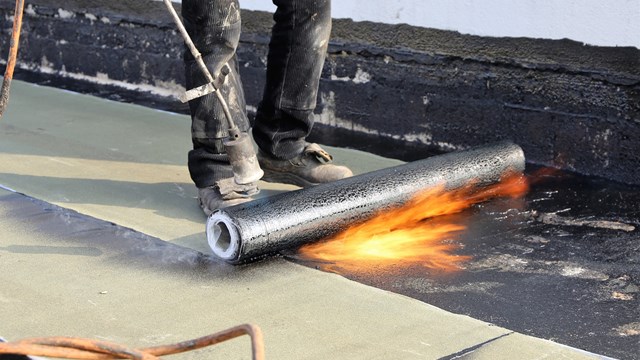From the venerable Dakota on the Upper West Side to the small-but-fashionable antique brownstones in the Village, to the formidable New York Public Library, hundreds of buildings in Manhattan and the outer boroughs have been designated historic landmarks. While landmark residential buildings are considered very desirable, even stylish, places to live and visit, they carry with them several unique concerns when it comes to maintenance and restoration projects.
Securing the permits and filing the paperwork necessary to commence work on a landmarked building is a project in itself, and the fines for not doing so are considerable. Contractors must comply with very specific guidelines, blueprints and designs when giving a landmark a facelift, right down to using the original color of caulking designated in the building plans. Of course, it's not all bad. By following the correct procedures, the efforts will keep landmarks looking their best for the next hundred-plus years, and guarantee their status as desirable places to live.
Lina Gottesman, president of Altus Metal and Marble Services, a New York-based contractor specializing in refurbishing and maintaining metal and marble accents on historic buildings, says Lower Manhattan and Midtown are home to many of New York's historic and landmark buildings. Manhattan, she says, began there and then grew northward over time, which makes the area a hotspot of architectural history. In order for a building to qualify for landmark status, Gottesman says it must conform to Landmarks Preservation Commission - or LPC - guidelines, which pertain to age and the manner in which the building was preserved, among other factors. According to the LPC, the Landmarks Law requires that to be designated, a potential landmark must be at least 30 years old and must possess "a special character or special historical or aesthetic interest or value as part of the development, heritage, or cultural characteristics of the city, state, or nation." Once the LPC receives a request, an Request for Evaluation (RFE) Committee, consisting of the chairman, the executive director, the chief of staff, the director of research, and other agency staff members, review the materials submitted and discuss whether the property meets the criteria for designation. The director of research then sends a letter to the person who submitted the request, informing him or her of the committee's determination. If considered for designation, a public hearing then will be held on the request.
The proper permits, permissions and licenses from the LPC and the Department of Buildings - or DOB - must be secured before work can begin. And that, says Wayne Bellet, president of Bellet Construction, a New York-based contractor and landmark preservation expert, is no simple task. "If it is landmarked, you have to go through the approval process not only of the co-op and condo board - which is almost secondary - but more so the LPC." Thus, the LPC must approve in advance any alteration, reconstruction, demolition, or new construction affecting the designated building.
Before that step, the building must secure a professional engineer to prepare drawings for the DOB. Those will be filed, signed and sealed by the professional engineer, or PE, who will be solely responsible as the applicant of record. After that, the next step is to file the plans with the LPC.
Bellet says the engineer or their representative will show the drawing to the LPC examiner, who will open up objections. After working that out, an approval and permits can be issued. Forms then go to the DOB and are filed for an Alteration Type II, which is the application restoration projects fall under. After gaining the signature and endorsement of the engineer and the building owner, the application and plans must be approved. Once that is completed, a work permit can be issued.
The approval process, needless to say, can be very time-consuming, whether it's a landmarked building or not. For example, in 2001 there were 5,114 new buildings and 81,421 alteration sites ongoing at any one time in New York City - all of these were allocated only 230 inspectors.
The process of restoring a landmark building as opposed to one without that designation is overall "more costly, because you have more steps to go through," Bellet says. "The LPC has a full set of steps that you typically wouldn't have to do [in a non-landmark building]." Retaining a PE costs between $1,000 and $2,000, and the preparation of the application, filing and approval by DOB usually comes out between $900 and $2,000. The contractor's work permit costs between $200 and $400 to obtain.
"What most people don't do is get a file inspection by a professional engineer," Bellet adds. A technical report form, or TR1, which goes to the DOB, should be done. A letter of completion is then generated, certifying that the construction sign-off for the application has been filed. "If you don't do that, the application that was filed will be there indefinitely," Bellet warns. The TR1 form closes many open issues, and prevents one from being called down to the DOB for an inquiry, as well as having to contest tax matters.
Bellet says that although "people are daunted by the prospect, ignorance of the law is no excuse." According to the DOB, anyone living in and benefiting from a landmark building, (i.e., getting increased real estate value because of landmark status), must abide by its rules and regulations. Bellet says the fine for noncompliance - for working without the appropriate forms - can be up to 10 times the filing fee.
Gottesman says the restoration process overall is slower and more involved in landmarks than in newer buildings because, "Things have to be done in a slower fashion, and things have to be replicated. They require a different process than getting something off a conveyor belt that's already pre-made, or fabricated by a particular drawing." She says that in restoration, materials must often be drawn in the field and fabricated to match some existing part. Molds have to be made, and the process takes time and money.
After the paperwork has been secured, an even more delicate process begins. The restoration job itself requires precise attention to detail, which cannot deviate from the original building design, lest the contractor face serious consequences. "Landmark and historic properties by their inherent nature have to be restored to their original design," Bellet says. The LPC, he adds, will help with that, but "they have full authority to approve your workmanship. You can get fined if something is not to specification."
Bellet says that although that might lead to some complications on the job, "if they didn't regulate the city, we would have a hodgepodge of building designs." Most landmark projects fall under the jurisdiction of the LPC, which alone can designate a building a landmark, and the DOB and its construction divisions, all of which are overseen by the mayor.
"Generally there are written specifications to the fact that this is a landmark - therefore, whenever doing any type of restoration work, we first have to go by the rules on that particular type of work," Gottesman says. When restoring an exterior façade, for example, she says she has to ensure that she is meeting the proper standards. Any type of alteration to the metalwork, she continues, is forbidden. Stone may not be discolored or altered in any way.
Although "it is a little more difficult, these are some of the best and most interesting projects," she says. However, because it is a protected location, many different rules apply, and they might even dictate what kinds of machinery can be used on the premises. In addition, Gottesman says, "there may be other factors because it is an old building that we have to take particular care with. You never know what you're going to find sometimes when old things are taken apart for restoration purposes." Sometimes, she says, one might remove something only to discover some damage underneath that must be repaired. "With new work, you have a pretty good idea."
The question of which contractor lands a restoration job begins with the DOB's specifications for the project. Bellet says the department will tell the contractor how to clean the brick, what product to use, and what colors to repaint. Once the application has been stamped, sealed and approved, the job is open to most contractors. However, Bellet adds, "anyone who wins will have to do what is designated in those drawings. Any deviation therefrom will be deemed a violation and will not be approved." Should something go awry on the job, he continues, it will have to be repaired. With the wrong contractor, he says, restoration projects can drag on for years.
If the contractor gets the work permit, they must have a file in the DOB that carries the firm's federal ID number and insurance documentation. That information must also be included on their certificate of general liability, and they must have a bond on file at the DOB. If any of those items are not listed in the DOB, they will not receive the work permit. Other than insurance requirements and bonding with the DOB, Bellet says, no other licensing is required.
Gottesman describes the bidding procedure as a qualification process and in order to qualify for the listing, she says one must have been involved in a minimum of three historic restoration projects. After the LPC investigates the project and certifies the contractor, they will be given a listing.
Although landmark restoration is a delicate, often-complicated procedure, most contractors agree that they also are among the most uniquely rewarding and interesting projects, the results of which will withstand the test of time.







Leave a Comment